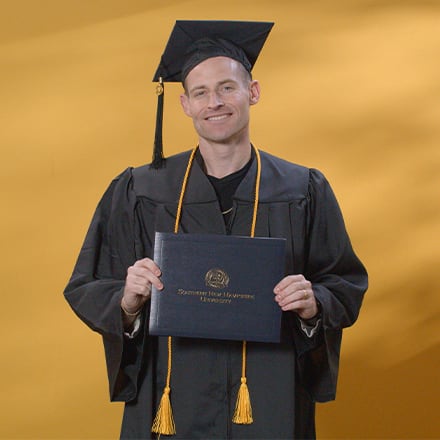Nursing Shortage: Why There’s a Continued Demand for Nurses

Understanding the Numbers
When reviewing job growth and salary information, it’s important to remember that actual numbers can vary due to many different factors — like years of experience in the role, industry of employment, geographic location, worker skill and economic conditions. Cited projections do not guarantee actual salary or job growth.
Registered nursing is one of the top professions for growth. If you’re interested in advancing your nursing career, or are considering joining the profession, it’s important to understand what’s behind the nursing shortage and what opportunities this shortage might create for you.
The nationwide nursing shortage is not a new topic. The American Nurses Association (ANA) estimates an 11% growth rate through 2022. Meanwhile, the U.S. Bureau of Labor Statistics estimates there will be 175,000 positions for registered nurses each year through 2029.
When you hear nursing shortage, you may think of practicing nurses. But there’s also a shortage of nurse educators. Nationwide nursing faculty shortages limit nursing program student capacity, making it impossible to keep up with the demands of the nursing shortage (AACN PDF source). The problem has been discussed in a language such as “in the next 20 years.” But now that 2026 is just 5 years away, this poses a significant concern to the healthcare system.
The American Association of Colleges of Nursing (AACN), the ANA and the Institute of Medicine have reported the importance of addressing the nursing shortage for more than a decade. A shortage occurs when the demand for nurses available outweighs the number of nurses available to work. As the current nursing shortage deepens, the pressure will intensify for nursing programs to increase the enrollment capacity to fill these vacancies.
The healthcare industry worldwide is undergoing radical transformation based on recommendations from the Institute of Medicine and Quality and Safety Education for Nurses (QSEN) initiatives. The nursing profession is at the forefront of this transformation, but the nursing shortage must be addressed.
What is Causing the Nursing Shortage?
There are four main contributors to the nursing shortage:
- Retiring nurses or those choosing to leave the profession
- The aging population necessitates increasing the level of care patients require
- A nursing faculty shortage capping pre-licensure admission capacity
- Nursing burnout
According to AACN, the average age of the nursing workforce is 50 years old. Whereas this is not retirement age, today’s healthcare with emerging technologies (i.e., computerized charting, barcode medication administration) coupled with the rising acuity of patients increases the mental and physical demands required of practicing nurses today impacting a nurse’s decision to retire at an earlier age than other professions. The notable increase in nurses taking early retirement reduces an already depleted nursing workforce.
Nursing is a knowledge-intensive profession built upon years of experiences, on-the-job training and invaluable clinical reasoning skills. The ANA estimates that 1 million nurses will retire between now and 2030. Not only is the profession expected to lose a large number of nurses, but when experienced nurses leave, healthcare organizations are left to mitigate the threat of lost knowledge. Nurses will leave with the critical nursing experience and knowledge they have accumulated. This leaves enormous shoes for new graduate nurses to fill.
A second cause impacting the nursing shortage is that people are living longer due to advancing medical science. The U.S. has the largest number of Americans over the age of 65. As the population ages, the number of health conditions, chronic illnesses and co-morbidities requiring healthcare services grow. These increasing healthcare needs require healthcare organizations to increase nursing staff to provide quality care safely.
A third contributor is the pre-licensure nursing education capacity. There is a direct link between the nursing shortage and nursing education. According to the AACN, nursing schools in the United States turned away approximately 80,000 qualified applicants due to an inadequate number of faculty, clinical sites, academic space and budget. According to the Higher Ed Jobs, to date, there are currently over 1,000 open nurse educator positions with 500 of these vacancies at the associate degree level.
A final contributor crucial to highlight is nurse burnout. With the nursing shortage and the complexity of healthcare needs, many nurses are overworked and emotionally exhausted. Nurses are choosing to leave the profession. If the nursing shortage is not addressed, nurses will continue to leave the profession due to burnout. If nurse burnout is not addressed, the United States will continue to deal with a nursing shortage. It is a cycle that needs to be broken. Many statewide initiatives are taking place to address practicing nurse and nurse educator shortages as they are linked and cannot resolve without the other.
Is There a Nursing Shortage Worldwide?
The nursing shortage is not just an issue in the United States, but also a global problem. Globally, nurses comprise half the healthcare workforce. It is estimated that there will be a nurse shortage of 7 million globally by 2030 (Centre for Health & Social Care Research PDF source). Just as mentioned above, the same causes are impacting the profession of nursing worldwide.
When Did the Nursing Shortage Begin?
According to the World Health Organization (WHO), the nursing profession has dealt with periodic nursing shortages; however, shortages have always been resolved until the past decade. With many nurses near retirement age, the increasing number of older adults with chronic disease, and the inability to train nurses fast enough, the nursing shortage will only grow. Healthcare organizations and academic nursing programs must align in order to address the nursing shortage.
What States Have a Nursing Shortage?
Not every state is experiencing a nursing shortage. Nurses tend to work in urban areas, leaving rural areas facing more significant shortages. Additionally, the COVID-19 pandemic has demonstrated the shortage of specialized nurses around the country. Healthcare systems are overwhelmed with the acute needs of patients ill with COVID-19, and nurses with specialized skillsets are in high demand. While there is a nursing shortage nationwide, it is interesting to see the differences between states. You might think that it could be rural vs. Urban areas, but that is not the case. According to a Supply and Demand Summary by the Center on Education and the Workforce at Georgetown University, North Dakota, Washington D.C. and Rhode Island have the highest concentration of nurses (Georgetown University PDF source).
In contrast, California, Georgia and Nevada have the lowest. California, Texas and New York are reported to have the highest number of nurse vacancies.
What Types of Nurses are Most in Demand?
According to a quick search via Indeed®, there are vacancies in every unit, department and specialty across the nursing industry. The important takeaway is that not only is there a shortage of practicing nurses in all fields, but also a shortage of academic nurses. According to the NLN Biennial Survey, 43% of pre-licensure nursing programs report the number one reason for the inability to expand enrollment is a lack of nursing faculty (NLN PDF source). To practice as a nurse educator, a nurse must have a graduate degree in nursing. Just as a pre-licensure nursing programs have difficulty increasing capacity due to limited faculty, graduate nursing programs have the same issue.
Where Are Most Nursing Jobs Located?
As mentioned above, there are numerous nursing vacancies within every state across America. The nursing shortage has allowed nurses to be employed nearly anywhere, in their specialty of choice. In a strategic move, the National Licensure of State Board of Nursing (NCSBN) has introduced the National Compact License (NLC), which allows nurses in a compact state to practice physically or remotely in any other compact state without having to apply for another license.
The NCSBN reports that approximately 2 million nurses live in a compact state and can practice in other NLC states. Currently, 34 states have elected to partake in the NLC. This is a huge step forward in helping close the nursing shortage gap for both practicing nurses and nurse educators as this allows nurses to cross state lines, participate in telemedicine outside of their state and teach as a nurse educator via distance learning.
What Does This Mean for You?
Nurses make up the largest sector of all healthcare professions and have a seat at the table to shape healthcare delivery. As the current nursing shortage deepens, the demand for versatile, competent nurses will continue to rise. With that being said, there is not a better profession to join than the nursing profession. Johnson & Johnson, an advocate for the advancement of the nursing profession, believe that nurses are uniquely positioned to change the trajectory of healthcare.
Nursing is a career in which your ideas can change the lives of others, and even healthcare itself. With more than 90 nursing specialties, nurses have choices, challenges and numerous opportunities to take on more responsibilities, and the salary is commensurate with education and experience. With an advanced degree, nurses can also become independent healthcare providers, such as a nurse practitioner or a nurse anesthetist, or leaders in their field as clinical nurse leaders, nurse administrators and nurse educators. There are many options for nurses looking for a more advanced role within their profession. These are exciting times and with an advancing profession, the best time to be a nurse.
Dr. Crissy Hunter, DNP, RN, CHSE, CNE has been a nurse for over 20 years. She has taught undergraduate and graduate nursing full time for the past 12 years. Currently, she serves as course coordinator for the Master of Science in Nursing nurse educator core courses (Teaching and Learning, Assessment and Evaluation and Curriculum Design). Additionally, Dr. Hunter is the coordinator, advisor and faculty for the nurse educator capstone experience with students and preceptors. Dr. Hunter holds a Doctorate in Nursing Practice from American Sentinel University and multiple specialty certifications in nursing education.
Explore more content like this article

The Importance of Health Education

SNHU Spotlight: Philip Hensarling, BS in Healthcare Administration Grad

SNHU Spotlight: AnnMarie Kulis, MS in Healthcare Administration Grad
About Southern New Hampshire University

SNHU is a nonprofit, accredited university with a mission to make high-quality education more accessible and affordable for everyone.
Founded in 1932, and online since 1995, we’ve helped countless students reach their goals with flexible, career-focused programs. Our 300-acre campus in Manchester, NH is home to over 3,000 students, and we serve over 135,000 students online. Visit our about SNHU page to learn more about our mission, accreditations, leadership team, national recognitions and awards.


